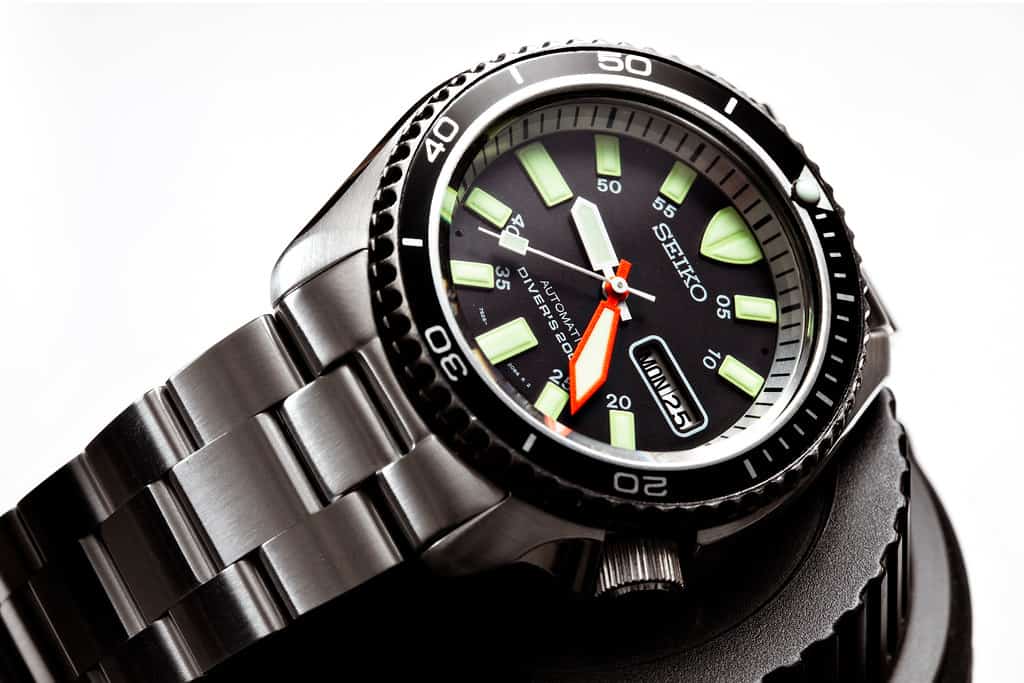As a casual watch wearer, have you ever wondered what the top ring around the crystal on the watch is called? You may or may not have heard about it, it's called a "Bezel". But do you know what is a watch bezel used for? Other than adding awesome aesthetic appeal, do bezels serve other functionalities?
Basically, the watch bezel is used to calculate a dive's length. A rotating bezel allows for easier reading of the elapsed time of under one hour from a specific point. So, Watch Bezels add functions without complicating the watch movement.
In this article, we've gone through a lot of detail on different watch bezels. If you're interested in learning more about this topic, consider reading thoroughly and let us know your thoughts!
What is a Watch Bezel?
Before everything, we should know what actually a watch bezel is. Basically, the bezel is a ring in the top part of the watch which holds a crystal or glass. Typically, watch bezels are made out of metals but they also can be made out of other materials like ceramics. Depending on the price, the bezel material can be silver or gold.
Some watch bezels are fixed, some are snapping or tearing on, while others can rotate unidirectionally or bidirectionally. Watch bezels might be simple or have decorative elements like bolts or twists. As you can probably tell, bezels aren't just for decoration, it can also serve a function.

Related Read: Victorinox Maverick Review
Why Do Watches Have Rotating Bezels?
Dive watches have rotating bezels to set a specific time of reference. The rotating bezel makes it easy to view elapsed time of less than one hour from a specific position. Divers can rotate their bezel so that the 12 o'clock marker signifies when it is time to exit the water.
There are three types of rotating bezels. Unidirectional bezel, Bidirectional bezel, and Ring Command.
Unidirectional Bezel
Unidirectional bezels can only rotate in one direction, which is normally counter-clockwise, as the name says. This is purely a safety feature, not a lack of adaptability. The unidirectional movement ensures that if the bezel is unintentionally twisted or knocked out of place, it will only display more time, not less, which is especially beneficial during scuba diving.
A scuba diver with 45 minutes of air in his tank could rotate the bezel to show either the zero or the 45 mark, depending on whether the gauge is a count-up or count-down. Instead of subtracting the starting time from the current time to determine how many minutes you have elapsed underwater or how many minutes of air are remaining, the diver may see how much air is left with a fast peek at the watch.
If you're a fan of unidirectional bezels, check out this Citizen Promaster Diver Review.
Bidirectional Bezel
Both clockwise and counterclockwise rotation is possible with bidirectional rotating bezels, allowing it to be utilized for mathematical calculations as well as calculating how much time has passed or remains.
Moreover, certain bidirectional bezels have an hour scale rather than a minute scale, allowing them to be utilized as a time zone display rather than a simple timer.
Ring Command
Ring Command bezels are unique to Rolex watches, while a similar principle can be seen on other brands' watches. Despite their being on the outside of the case, Ring Command bezels are linked to the internal movements of their respective watches, allowing for additional adjustment and setting positions without the use of additional buttons, pushers, or crown settings.

Related Read: Which Hand Does a Watch Go On
Types of Bezel
Plain/ Fluted Bezel
Not all bezels have a functional use, like displaying a scale or numbers. Instead, they show the watch's design with historical references. The plain bezel can be entirely plain with just the basic metal or can be fluted, paying respect to historical watchmaking. The plain Bezel also can have a colour or other decorations like studs, engravings, gems, and more.
Tachymeter Bezel
For chronograph watches, it is a scale on a fixed non-rotating bezel that calculates units per hour. When reading clockwise, the tachymeter scale begins around 4000-1000 units and stops at 60 units at 12 o'clock. This kind of scale is used to measure speed or distance, but some calculations may need more mathematical equations than others.
The tachymeter or tachometer is probably the most common bezel found on the outer ring of the dial or on the bezel.
Slide Rule Bezel
The slide rule is one of the most misunderstood and complicated bezel scales on a watch. It provides the wearer with the ability to perform mathematical calculations. You can perform multiplication and division by rotating the outer ring.
Pilots of the 1950s could use the scale to measure fuel consumption, flight time, airspeed, and distance, as well as metric to standard conversions.
Pulsometer Bezel
In the 21st century, finding a pulsometer bezel is rather difficult. Doctors and nurses used this watch bezel to calculate a patient's heart rate in the 1920s. The pulsometer measures heart rate in minutes, similar to the tachymeter scale, which measures units per hour. The scales are calibrated from 15 to 30 pulses every rotation of the dial, beginning at 200 seconds.
Doctors would start the chronograph and count the beats up to the maximum rating of their timepieces, then stop it. When they stop, the second's hand would line up on the pulsation scale, allowing them to read the heart rate in beats per minute.
Telemeter Bezel
This scale is quite uncommon and intended to measure the distance between a visual and audible event. This could be used in military watches to determine the distance between you and an enemy based on when you see and hear their gunfire.
You may also use this to figure out how far away a lightning strike is. For example, you might begin the chronograph timer when you see a bolt of lightning or when you hear thunder. The chronograph will be placed on top of the measured distance, which is usually in kilometres.
Compass Bezel
The four directions, as well as many degrees in between, are marked on the compass bezel. If you have a regular watch, you can already tell what direction north is. On the other hand, the compass bezel makes things easier because it can be rotated to mark the north so you don't forget.
For hikers and climbers, this bezel is very beneficial. However, because this is not a magnetic compass, you can only use it for this purpose while the sun is visible.
Decimal Bezel
The wearer can convert time into decimal values using the decimal bezel. The unique 100 scale, which is generally used for scientific and industrial measures, makes it immediately recognizable. Scientists and industrial engineers that perform time studies usually measure time in decimals to make calculations easier. As a result, this bezel will make the job much easier.
GMT Bezel (Greenwich Mean Time)
The GMT bezel is surrounded by a 24-hour scale, and the dial features a GMT hand. As a result, the watch can be used in two time zones. A third time zone can be created if a second 24-hour ring is added to the dial. The bezel is frequently two-toned, indicating day and night. That's why this bezel is ideal for those who travel worldwide.
Count-Up Bezel
Diving watches are most likely to have a count-up bezel. These scales go from 0 to 60, representing minutes in an hour, and are used to keep track of the amount of time you elapsed underwater, as well as the depth and amount of air you have left. One minute increments are usually used for the first 15 (sometimes 20) minutes while the rest is normally marked in five-minute increments.
The only way to rotate this dive bezel is counterclockwise. This means that if the bezel is unintentionally moved while diving, the remaining time will be reduced. This is a safety feature that assures the tank will have more air rather than less air if the bezel is accidentally moved.
Countdown Bezel
The countdown bezel indicates how much time is left in an event, either before or after it begins. It's also a diving bezel. The countdown scale, like the count-up scale, has marks from 0 to 60. The difference is that the countdown bezel will start counting down from 60 and end at 0.
The countdown bezel is usually bidirectional, which makes it unsuitable for diving. Since the countdown bezel can be rotated in either direction, runners and other types of racers are the most common users of this bezel.
Yacht-Timer Bezel
In regatta racing or yachting, a yacht-timer bezel is mostly used. The yacht-timer bezel functions primarily as a countdown timer, with a scale ranging from ten to one. The start of the countdown to race time is signalled by a horn in boat racing. The crew's objective is to prevent passing the starting line before the second signal, which starts the race. Typically, the timers will display the amount of time till the race begins.
Frequently Asked Questions
How Does A Bezel Attach to A Watch?
Bezels can be attached to the case using a variety of methods, including screws or the case's geometrical structure. However, the bezel on most watches is simply snapped on.
Final Thoughts
So, basically, bezels aren't just for decoration. They possess unique functionalities. There are many types of bezel out there and each comes with a unique style and serves a specific purpose. You just have to know how to properly use it.
Hope our article helped you to know the usage of watch bezels, so you can choose which bezel is the best for you. Now get the perfect watch bezel and utilize the functionalities!


